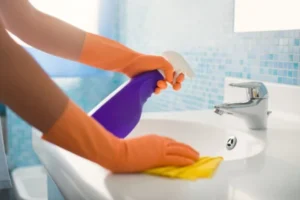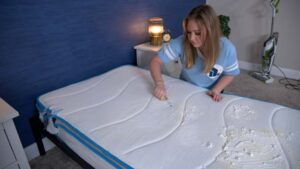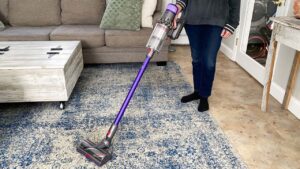Keeping a bedroom clean is essential to ensure a peaceful environment for relaxation and sleep. One of the most basic tools for maintaining cleanliness is a dustpan and brush. However, many people underestimate the importance of using this tool correctly. In this article, we will explore the art of using a dustpan and brush for a spotless bedroom.
Introduction
The dustpan and brush are simple tools used for cleaning up dirt, dust, and debris from floors. When used correctly, they can help keep your bedroom clean and tidy. However, using them improperly can create more mess than before. In this article, we will cover the correct techniques for using a dustpan and brush in your bedroom.
Choosing the Right Dustpan and Brush
The first step in using a dustpan and brush is choosing the right one for your needs. Here are some things to consider when selecting a dustpan and brush:
1. Material
Dustpans and brushes can be made from various materials, including plastic, metal, and wood. Consider the type of surface you will be cleaning and choose a material that will not damage it.
2. Size
Select a dustpan and brush that is appropriate for the size of your bedroom. A smaller brush may be suitable for a small room, while a larger one may be required for a larger space.
3. Bristles
Choose a brush with bristles that are appropriate for the type of surface you will be cleaning. Stiffer bristles are ideal for carpets and rugs, while softer bristles are better for hardwood or tiled floors.
Correct Technique for Using a Dustpan and Brush
Using a dustpan and brush correctly requires attention to detail and proper technique. Here are the steps to follow:
1. Sweep the Debris
Begin by sweeping the debris from your bedroom floor using the brush. Start from one end of the room and work your way towards the other end. Be sure to sweep the debris into a pile in the center of the room.
2. Position the Dustpan
Place the dustpan on the floor, directly in front of the pile of debris. Ensure that the edge of the dustpan is touching the floor.
3. Sweep the Debris into the Dustpan
Using the brush, sweep the debris into the dustpan. Start from the edge of the pile closest to the dustpan and work your way towards the center. Be sure to keep the brush in contact with the floor as you sweep.
4. Empty the Dustpan
Once you have swept all the debris into the dustpan, lift the dustpan off the floor and empty the contents into a trash can or bin. Be sure to hold the dustpan level to avoid spilling any debris.
Tips for Using a Dustpan and Brush
Here are some additional tips for using a dustpan and brush effectively:
1. Use Short Strokes
When sweeping with the brush, use short strokes to ensure that all debris is collected.
2. Sweep towards Yourself
Sweep the debris towards yourself to avoid pushing it under furniture or into corners.
3. Avoid Using a Wet Brush
Do not use a wet brush on hardwood or laminate flooring, as this can damage the surface.
4. Clean the Brush Regularly
Clean the brush regularly to prevent the buildup of dust and debris. Use a comb or your fingers to remove any hair or lint.
Conclusion
Using a dustpan and brush may seem like a simple task, but it requires attention to detail and proper technique. By following the steps outlined in this article, you can use this tool effectively to keep your bedroom spotless. Remember to choose the right dustpan and brush, use short strokes when sweeping, and avoid using a wet brush on certain surfaces. With these tips in mind, you can ensure that your bedroom is always clean and tidy.
FAQs
- Can I use a dustpan and brush on carpets? Yes, you can use a dustpan and brush on carpets. Choose a brush with stiffer bristles for best results.
- How often should I clean my brush? It is recommended to clean your brush after every use. Use a comb or your fingers to remove any debris.
- Can I use a dustpan and brush on hardwood floors? Yes, you can use a dustpan and brush on hardwood floors. Choose a brush with softer bristles to avoid scratching the surface.
- What should I do if the debris doesn’t stay in the dustpan? If the debris doesn’t stay in the dustpan, try adjusting the position of the dustpan or using shorter strokes when sweeping.
- Is it important to empty the dustpan after every use? Yes, it is important to empty the dustpan after every use to prevent the buildup of debris and ensure the tool remains effective.



